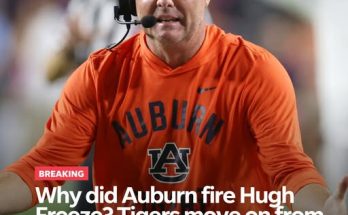The 2025 Texas Longhorns roster is a compelling tapestry woven with top-tier talent, emerging stars, and strategic depth, all converging under a clear vision: winning a national championship. At the heart of this blueprint lie player ratings—the numerical recognition of on-field performance—that spotlight who these key contributors are and how they fit into the broader scheme.
First, defensive dominance stands as the cornerstone. The Longhorns’ defense received an outstanding 94 overall rating in EA Sports’ College Football 2026, a testament to both talent and system, [Houston Chronicle][2]). Anchoring the front seven is linebacker Anthony Hill Jr., rated a remarkable 95 and coming off a junior season that stunned analysts: 113 tackles, 16.5 tackles-for-loss, eight sacks, four forced fumbles, and an interception . His dominance earned him first-team All-American honors, a first-team All-SEC selection, and widespread recognition by PFF as the nation’s top linebacker ([Wikipedia][4]). Hill is the fulcrum of a defense capable of suffocating any offense, providing the playmaking, physical toughness, and leadership essential in clutch games—an indispensable weapon in Austin’s pursuit.
Complementing Hill is sophomore edge rusher Colin Simmons, assigned a rating of 93, and widely hailed as college football’s top returning edge rusher by PFF , Fresh off a freshman campaign with 9 sacks and consistent pressure generation, Simmons represents the Longhorns’ fearsome edge problem—an ever-present menace to opposing quarterbacks and a magnet for blocking attention. His dual-threat ability to collapse the pocket and disrupt backfields strengthens Texas’s defensive versatility.
The defensive backfield is no less imposing. Cornerback Malik Muhammad (92) and safety Michael Taaffe (91) both earned high marks ([Houston Chronicle][2]), reinforcing the Longhorns’ reputation for depth and coverage prowess. This secondary cohesion was a keystone in Texas’s playoff run—limiting opponents’ passing options and granting the front seven time to close in. According to Reddit analysis, the synergy between pressure packages and coverage tactics—“muddying the reads” for quarterbacks—elevated the overall chaos the defense unleashed . Under defensive coordinator Pete Kwiatkowski, now in his third season, the unit has matured into one of the nation’s most cohesive and dangerous groups.
It’s impossible to talk about Texas’s defensive blueprint without acknowledging the role of veteran stalwarts like Jahdae Barron, a Jim Thorpe Award winner who has since departed to the NFL. Yet, the secondary remains strong, thanks in part to emerging sophomores like Jordon Johnson‑Rubell—a versatile DB with the size and instincts to quietly emerge as a leader in Barron’s absence This depth and continuity allowed Texas to weather the transition and maintain elite play.
Equally critical is the offensive blueprint, anchored by both stability and explosive talent. At quarterback, Arch Manning is ready to step into the spotlight as 2025’s starter. Manning, rated 90 in College Football 2026, carries remarkable pedigree as the first non-SEC Manning and one of the most valuable NIL athletes—estimated at \$5 million/year . Observers including Paul Finebaum have likened him to Tim Tebow, citing his upside as Heisman-level talent . While his game experience remains limited—just 63 career passes—the potential is undeniable. ESPN’s FPI places Texas at the top of SEC title probabilities at 24.1 percent, an assessment directly influenced by Manning’s promise .
Yet a great quarterback can only thrive behind a robust supporting cast. The offensive line, among college football’s best, earned top-three pass-block grades according to PFF in 2024 ([Dallas News][9]). However, the 2025 season brings turnover: four of five starters—Kelvin Banks Jr., Cameron Williams, Jake Majors, and Hayden Conner—have departed, leaving Trevor Goosby to anchor a line undergoing a rebuild ([Dallas News][9]). Banks, a decorated lineman (Lombardi, Outland, All-American), is preparing for a top-10 NFL pick . The challenge now lies in integrating the next wave of talent, including Goosby and returning players DJ Campbell and Cole Hutson, to replicate last year’s elite protection.
At skill positions, Texas blends proven production with ascending stars. Running back Quintrevion Wisner, rated 91, was third-team All-SEC and amassed over 1,000 rushing yards plus 311 receiving yards—a dual-threat anchor for Sarkisian’s offense . He remains the workhorse. Freshman Cedric Baxter Jr. adds power in short-yardage , while future options like Tre Wisner and Jaden Blue deepen the backfield and support creative two-back packages.
Wide receivers carry electric upside. Ryan Wingo (86) and DeAndre Moore Jr. (87) provided steady contributions in 2024—Wingo totaled 472 yards, and Moore racked up 465 yards with 7 touchdowns Incoming freshman speedsters Kaliq Lockett and Jaime Ffrench give Sarkisian verticality options, the likes of which helped redefine Texas’s offense during the last four seasons . Add past deep threats like Isaiah Bond, Johntay Cook II, Matthew Golden, and Silas Bolden—all top recruits with proven track records—and the receiving corps is locked and loaded.
At tight end, veteran Ja’Tavion Sanders teams with Gunnar Helm to provide blocking, mismatches, and red-zone threats, bolstered by backups valued for depth and formation flexibility ([My Blog][10]). The cumulative effect is a well-rounded, adaptable offense tailor-made for Manning’s first season leading it.
Strategically, Texas’s blueprint relies on three pillars: elite defensive disruption, balanced offense, and adaptable scheming. Defense thrives on pressure and confusion; Hill and Simmons make tackles, force turnovers, and collapse pockets, while the secondary enables chaos through coverage masks . Offensively, the balance of playmakers—speed, power, and weaponry—gives Sarkisian flexibility: they can run or pass depending on opponent, with Manning orchestrating the attack.
Depth emerges as a vital theme. From DBs to backups in the trenches, Texas possesses options ready for sudden elevation. The recent growth in transfers and recruiting provides insurance against attrition . Women’s basketball star Madison Booker’s Team USA gold-medal experience shows development-focused culture transcends football—a clear indicator of an athletic department-wide push.
To claim a championship, Texas must grow through adversity: quarterback growing pains, line cohesion, and maintaining defensive consistency. Manning’s transition to starter comes with expected adjustments. The offensive line must return to elite pass protection despite turnover. While the defense remains stout, it must continue applying pressure under evolving rosters and assignments. Off-field, managing NIL expectations and media hype around Manning requires institutional poise.
In essence, the ratings reveal more than static talent—they outline the blueprint. Hill is the heartbeat; Simmons injects relentless edge pressure; the D-back group delivers lockdown coverage. Offense is balanced among Mannings’ leadership, rushing potency, and receiver speed. The revised line and depth pieces offer promise hotwired to Sarkisian’s adaptable schemes.
From elite defensive grades to balanced offensive weapons and a true quarterback heir in Manning, the Longhorns possess the plumbing of a championship team. There are variables—youth, turnover, pressure—but the numbers don’t lie. Through growth, cohesion, and execution, Texas’s blueprint aligns players, strategy, and depth in pursuit of its first national title in the modern era. When all systems sync—defense overwhelming, offense efficient, quarterback at the helm—the rising stars and deep roster could deliver the Longhorns back to the summit.
In putting this all together, we get a full portrait: Texas’s blueprint isn’t built on one player or one unit—it’s constructed across the depth chart. Ratings validate their championship outlook—but these figures matter only when translated into on-field chemistry, adjustments, and deliverance under fire. As long as development, health, and cohesion hold, the Longhorns boast every structural and statistical advantage needed to seize the crown.
That narrative, stretching seamlessly from Hill to Manning, from front seven to receivers, gives us clarity: Texas’s blueprint is deep, data‑validated, and championship‑ready.


